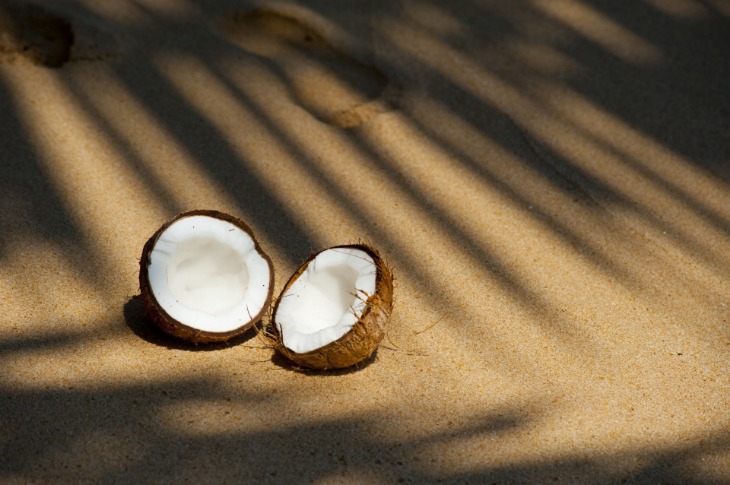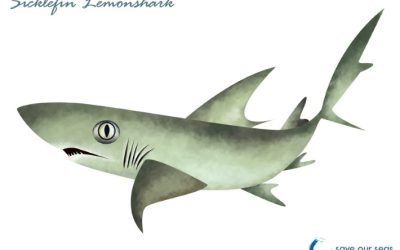Geographical Context of Seychelles and Coconut Cultivation
The Seychelles, an archipelago of 115 islands in the Indian Ocean, is renowned for its stunning natural beauty and diverse ecosystems. Positioned near the equator, these islands enjoy a tropical climate that fosters lush vegetation and rich biodiversity. Coconut cultivation has long been an essential aspect of the local economy and culture, thriving amidst the island’s fertile soils and warm, humid conditions. The unique geographical setting of Seychelles provides an ideal environment for the growth of coconuts, making them a vital resource for both subsistence and commercial purposes.
Location and Climate of Seychelles
Seychelles is an archipelago of 115 islands located in the Indian Ocean, northeast of Madagascar and about 1,600 kilometers east of mainland Africa. The islands are characterized by their rugged terrain, lush greenery, and pristine beaches, making them an ideal environment for tropical agriculture. The climate of Seychelles is tropical, with warm temperatures and high humidity throughout the year. It experiences a two-season pattern: a hot, humid season from November to March and a cooler,dry season from May to September, with transitional periods in between. This consistent warm climate and abundant rainfall create favorable conditions for coconut cultivation.
Ideal Growing Conditions for Coconut Trees
The Seychelles is an archipelago located in the Indian Ocean off the eastern coast of Africa, comprising numerous islands characterized by tropical climate, lush vegetation, and pristine beaches. Its geographical setting provides an ideal environment for coconut cultivation, which thrives in coastal and island ecosystems. The warm oceanic influence ensures a consistent temperature range conducive to coconut growth, while abundant sunshine and moderate rainfall support healthy development.
Coconut trees flourish in sandy, well-drained soils that are typically found along the shoreline and on low-lying coastal areas of the Seychelles. The tropical climate, with temperatures generally ranging between 24°C to 30°C, creates optimal conditions for coconut palms to produce high yields. Additionally, the high humidity levels and reliable rainfall patterns, usually between 1,500 and 2,500 millimeters annually, ensure sufficient water supply for the trees, fostering rapid growth and productive flowering.
For the best results, coconut trees require full sun exposure, well-drained soil conditions, and protection from strong winds that can damage the fronds and immature coconuts. The combination of Seychelles’ geographical features and climate provides an ideal setting for coconut cultivation, promoting not only healthy tree development but also supporting the local economy through coconut-based products.
Types of Coconuts in Seychelles
Coconuts in Seychelles are an integral part of the island’s natural beauty and local culture. The archipelago is home to various types of coconuts, each offering unique flavors and uses. These versatile fruits thrive in the tropical climate, providing essential resources such as water, meat, and oil. Exploring the different types of coconuts in Seychelles reveals the richness of this tropical paradise and the importance of coconut cultivation to its communities.
Coastal Coconut Varieties
The Seychelles islands are renowned for their diverse coconut varieties, particularly along the coastlines where the climate and soil conditions foster unique coastal coconut types. These coconuts play a vital role in local culture, economy, and cuisine, showcasing a range of varieties adapted to coastal environments.
One prominent coastal coconut variety in Seychelles is the Tall Coconut, which is characterized by its height and robust growth. This type is often found along beaches and provides a staple source of coconuts for local communities. The Dwarf Coconut, smaller in size, is popular for its easier harvest and suitability for small-scale cultivation in coastal areas.
Moreover, Seychelles hosts the Green Coconut, appreciated for its refreshing water and tender flesh, making it a favorite for hydration and consumption during the hot season. The Brown Coconut, with its mature shell and thicker kernel, is used extensively in local culinary dishes and traditional medicine. These coastal coconut varieties collectively contribute to the vibrant coconut landscape of Seychelles, reflecting the islands’ rich tropical biodiversity.
Inland Coconut Cultivars
Inland coconut cultivars in Seychelles are an important part of the region’s agricultural diversity, offering various varieties suited to different environmental conditions and uses. These cultivars are cultivated primarily for their high-quality copra, fresh water, and versatile meat, playing a vital role in local economy and traditional practices.
- Ceylon Tall Coconut
- Seychelles Dwarf Coconut
- Malayan Yellow Dwarf
- Fiji Dwarf Coconut
- Seychelles Giant Tall Coconut
Local Breeds and Hybrid Coconuts
Coconuts in Seychelles are diverse, comprising several native and cultivated varieties that contribute to the islands’ rich agricultural heritage. Local breeds of coconuts are adapted to the regional climate and soil conditions, ensuring their productivity and resilience. These indigenous types often have unique characteristics, such as specific flavor profiles and husk textures, which are highly valued by local communities.
Among the local breeds, the Seychelles Tall is one of the most prominent, known for its large size and high yield of coconut water and meat. It is well-suited to the island’s environment and plays a vital role in local cuisine and traditional practices. Other local varieties include the Dwarf types, which are smaller and often used for ornamental purposes or small-scale cultivation.
Hybrid coconuts are also cultivated in Seychelles to enhance productivity, disease resistance, and quality. These hybrids are developed by crossing local breeds with other tropical coconut varieties, resulting in plants that combine desirable traits such as increased tender coconut production and better adaptability to changing climatic conditions. These hybrid coconuts are increasingly popular among farmers aiming to optimize coconut yields and support sustainable agriculture in the region.
Agricultural Practices and Coconut Farming
Coconut farming is a vital agricultural practice in Seychelles, playing a crucial role in the island nation’s economy and culture. The tropical climate and fertile soils create ideal conditions for coconut cultivation, which provides essential resources such as coconut meat, oil, and fibers. Sustainable farming methods and traditional techniques are often employed by local farmers to ensure the continued productivity and health of coconut plantations, making them a cornerstone of Seychelles’ agricultural heritage.
Traditional Cultivation Methods
Coconut farming in Seychelles has a rich tradition rooted in traditional cultivation methods that have been passed down through generations. These practices emphasize sustainable use of land and resources, ensuring the longevity of coconut plantations. Farmers typically select well-drained, sandy soils for planting and often utilize organic compost to enhance soil fertility. During planting, coconut palms are usually spaced adequately to allow for proper growth and air circulation, which helps prevent diseases. Regular maintenance involves manual watering, removal of weeds, and natural pest control techniques to protect the palms without relying heavily on chemical inputs. Harvesting is traditionally done by hand when the coconuts reach maturity, often through climbing or using simple tools. These methods from Seychelles reflect a deep understanding of local environmental conditions and promote eco-friendly practices that preserve the health of coconut groves for future generations.
Modern Farming Techniques
Coconut farming in Seychelles plays a vital role in the country’s agricultural landscape, supporting local economies and cultural traditions. Modern farming techniques have transformed traditional practices, enhancing productivity and sustainability. Implementing integrated pest management helps protect coconut palms from pests and diseases while reducing chemical use. Drip irrigation systems ensure efficient water usage, crucial in Seychelles’ semi-tropical climate. Soil testing and the use of organic fertilizers improve soil health and coconut yield, promoting environmentally friendly practices. Additionally, adopting genetically improved coconut varieties can increase resilience against climate change and pests. Innovative pruning and harvesting methods reduce damage to the trees and improve fruit quality. Overall, embracing modern technology and sustainable practices in coconut farming ensures a prosperous and eco-friendly future for Seychelles’ agriculture sector.
Challenges in Coconut Agriculture
Coconut farming in Seychelles is a vital aspect of the island nation’s agricultural practices, contributing significantly to both the local economy and rural livelihoods. Coconut palms are cultivated across various island landscapes, providing not only food and raw materials but also employment opportunities for many farmers.
However, coconut agriculture in Seychelles faces several challenges. Pests such as the coconut mite and rhinoceros beetles pose significant threats to palm health and productivity. Additionally, diseases like lethal yellowing and Fusarium wilt have impacted yields and led to the loss of mature trees. Climate change has further intensified these issues, causing irregular rainfall patterns and increased cyclone activity which can damage coconut plantations.
farmer practices are evolving to address these challenges, including adopting integrated pest management strategies, selecting disease-resistant coconut varieties, and improving farming techniques to enhance productivity. Nonetheless, ongoing support from government and agricultural organizations is essential to ensure the sustainability and resilience of coconut farming in Seychelles.
Economic Significance of Coconuts in Seychelles
Coconuts hold a vital place in the economy of Seychelles, serving as a key agricultural product with diverse uses and economic benefits. As a source of income for local farmers and a valuable commodity in various industries, coconuts contribute significantly to the country’s rural development and export earnings. Their versatility in providing food, beverages, and raw materials underscores their importance in sustaining the livelihoods of many Seychellois communities.
Local Coconut-Based Industries
The coconut industry holds substantial economic significance for Seychelles, serving as a vital component of the nation’s agricultural and local industries. Coconuts are a key natural resource that supports various sectors, including food, beverages, and craft production, contributing to both local livelihoods and the economy. The cultivation and processing of coconuts provide employment opportunities for farmers and entrepreneurs, fostering rural development and sustaining local communities.
In Seychelles, several coconut-based industries have emerged to capitalize on this versatile fruit. These include coconut oil extraction, which is used for culinary purposes and cosmetic products, and the production of coconut-based crafts and souvenirs that attract tourism. Additionally, copra processing and the manufacture of coconut shell products such as charcoal and utensils support small-scale industries that further bolster the economy. Overall, coconut-related industries play a crucial role in diversifying Seychelles’ economy and promoting sustainable development within the country.
Export Markets and Trade
Coconuts hold considerable economic significance for Seychelles, serving as a vital agricultural product that supports both local livelihoods and national revenue. The island nation’s tropical climate provides ideal conditions for coconut cultivation, making it a key crop for small-scale farmers and the broader agricultural sector. Coconuts are used in various industries, including food processing, cosmetics, and traditional crafts, contributing to economic diversification and increased employment opportunities.
In terms of export markets, Seychelles primarily exports coconuts and coconut-based products to neighboring countries and regional markets. The country’s proximity to African markets, as well as international trading partners, facilitates the export of coconut commodities such as copra, coconut oil, and dried coconuts. These exports help generate foreign exchange and bolster the country’s trade balance, especially as Seychelles seeks sustainable ways to capitalize on its natural resources.
The trade of coconuts in Seychelles is supported by regional trade agreements and efforts to develop value-added products to increase market competitiveness. Initiatives to improve processing techniques and branding aim to expand export capacities and access new markets. Overall, coconuts play a strategic role in Seychelles’ trade landscape, contributing to economic resilience and the promotion of sustainable development on the islands.
Contribution to Local Economy and Livelihoods
Coconuts hold considerable economic significance in Seychelles, serving as a vital agricultural product that supports local livelihoods and contributes to the nation’s economy. The coconut industry provides employment opportunities for many locals involved in farming, harvesting, processing, and trading. Additionally, coconuts are essential for producing various products such as copra, coconut oil, and other by-products that are either consumed domestically or exported. This industry not only sustains local farmers but also fosters small-scale entrepreneurial ventures, promoting economic diversification. The widespread cultivation of coconut palms also enhances the aesthetic and environmental value of the islands, further supporting tourism, which is a crucial sector of Seychelles’ economy. Overall, coconuts are a cultural and economic asset, strengthening the resilience and sustainability of local communities while contributing significantly to the country’s economic development.
Coconut Products and Uses
Coconut products are a versatile and essential part of life in Seychelles, where the coconut palm is often called the “Tree of Life.” From nutritious fresh coconuts to a variety of processed goods, coconuts serve numerous purposes in local cuisine, traditional medicine, and daily routines. The rich resources derived from coconuts highlight their importance not only as a staple food but also as an economic contributor to the island nation. Exploring the uses of coconut in Seychelles reveals its vital role in cultural practices and sustainable practices across the islands.
Food and Culinary Uses
Coconut products from Seychelles are renowned for their versatility and rich flavor, making them an integral part of both local cuisine and daily life. The island’s abundant coconut palms provide a variety of edible and non-edible products that are deeply embedded in Seychellois culture and economy.
- Coconut meat: The white flesh of mature coconuts is consumed fresh, grated, or dried. It is used in cooking, baking, and as a snack.
- Coconut milk: Extracted by squeezing grated coconut flesh, it is a key ingredient in many Seychellois curries, stews, and desserts.
- Coconut oil: Derived from dried coconut meat, it is used for cooking, frying, and as a moisturizer for skin and hair.
- Coconut water: The clear liquid inside young coconuts is a popular refreshing drink rich in electrolytes.
- Coconut flour: Ground dried coconut meat, used as a gluten-free alternative in baking and cooking.
- Traditional Seychellois dishes such as “Ladob,” a sweet coconut-based pudding, and curries heavily rely on coconut products.
- Coconut chips and toasted coconut are often used as toppings for desserts and breakfast dishes.
- Young coconut water is enjoyed on its own or incorporated into drinks and smoothies.
- Coconut shells are repurposed for crafts, decorations, and traditional utensils, showcasing their practical uses beyond the kitchen.
Non-Food Products (oil, fiber, coir)
Coconuts from Seychelles are valued not only for their delicious fruit but also for a wide range of non-food products derived from different parts of the coconut. The coconut palm is an essential resource for local communities, providing materials used in various industries beyond culinary applications.
One of the most prominent non-food products is coconut oil, which is extracted from the kernel or endosperm of mature coconuts. This oil is highly versatile and is used in cosmetic formulations, skincare products, and traditional medicine due to its moisturizing and antimicrobial properties.

Coconut fiber, also known as coir, is another valuable product obtained from the husk of the coconut. Coir is used in making ropes, brushes, mats, brushes, and upholstery stuffing materials. Its durability and natural resistance to water make it ideal for outdoor and industrial uses.
In addition, coconut coir fiber is used in erosion control and as a growing medium in horticulture, promoting sustainable practices in Seychelles and beyond. The extraction and processing of these non-food products contribute significantly to the local economy, offering eco-friendly alternatives to synthetic materials and supporting sustainable development initiatives in Seychelles.
Traditional and Cultural Uses
Coconuts hold a significant place in the cultural and traditional practices of Seychelles, reflecting their importance in daily life and local heritage. They are a versatile resource, used in a variety of products and customs that have been passed down through generations.
Traditional coconut products in Seychelles include coconut oil, which is often used for cooking, as a skin moisturizer, and in traditional medicine. Coconut milk is widely used in culinary dishes such as curries and desserts, adding flavor and richness. The flesh of the coconut is also grated to produce copra, which can be processed further for oil extraction or consumed fresh.
Coconuts play a vital role in cultural rituals and celebrations. In ceremonial practices, coconut shells are often used as containers or adornments, symbolizing purity and prosperity. The act of breaking a coconut is a common ritual in religious ceremonies, signifying offerings to deities and seeking blessings.
Beyond their practical uses, coconuts are embedded in Seychelles’ folklore and traditions. They are frequently featured in local crafts, such as carving into decorative items or utilizing shells for jewelry. The significance of coconuts extends to social customs, where they are part of communal gatherings and festive events, symbolizing sharing and hospitality.
Environmental and Ecological Impact
Coconuts from Seychelles are renowned for their quality and cultural significance, but their production and harvesting also have notable environmental and ecological impacts. As one of the island’s key resources, coconut farming influences local ecosystems, biodiversity, and sustainability efforts. Understanding these effects is essential to ensuring that coconut cultivation benefits both the economy and the environment of the Seychelles islands.
Role of Coconut Trees in Coastal Erosion Prevention
Coconut trees in Seychelles play a significant role in mitigating environmental and ecological challenges, particularly in preventing coastal erosion. Their extensive root systems stabilize the soil and sand along the shoreline, reducing the impact of strong waves and currents that erode coastal areas. Additionally, coconut forests act as natural barriers, absorbing the energy of storm surges and rising sea levels, which are increasingly common due to climate change. The presence of coconut trees also contributes to biodiversity conservation by providing habitat for various marine and terrestrial species, thereby maintaining ecological balance. Overall, coconut trees are vital for protecting Seychelles’ coastal landscapes, supporting ecosystems, and promoting sustainable environmental management.
Biodiversity and Habitat Support
The cultivation and harvesting of coconuts in Seychelles play a significant role in supporting local ecosystems and promoting environmental sustainability. Coconut trees provide essential habitats for various bird species, insects, and small mammals, contributing to the overall biodiversity of the region. Their presence helps maintain ecological balance by offering shade, reducing soil erosion, and enhancing soil fertility through organic matter. Additionally, they serve as a vital resource for local communities, offering raw materials for food, clothing, and traditional crafts, which can reduce the pressure on natural ecosystems. Sustainable coconut farming practices are crucial to preserving the ecological integrity of Seychelles’ unique island habitats, ensuring that environmental and ecological benefits are maintained for future generations. Overall, coconut trees contribute substantially to supporting biodiversity and maintaining healthy habitats on the islands.
Sustainable Coconut Farming Initiatives
Coconut farming in Seychelles plays a significant role in the region’s economy and cultural heritage, but it also presents environmental and ecological challenges. To address these issues, sustainable coconut farming initiatives have been established to promote eco-friendly practices that protect local ecosystems. These initiatives focus on reducing the use of chemical fertilizers and pesticides, conserving water resources, and maintaining soil health through organic farming methods. By encouraging the planting of diverse crop varieties and integrating agroforestry practices, farmers help preserve biodiversity and prevent land degradation. Such sustainable practices ensure the long-term viability of coconut cultivation while minimizing negative impacts on the environment, supporting the ecological balance of Seychelles’ coastal and inland areas. Overall, these initiatives help promote responsible agriculture that benefits both farmers and the natural landscape of the islands.
Challenges and Future Prospects
Coconuts from Seychelles are renowned for their quality and versatility, playing a vital role in the island’s economy and culture. However, the industry faces numerous challenges such as climate change, pests, and shifting global market demands. Despite these obstacles, there are promising prospects for innovation and sustainable practices that can enhance production and export potential. Exploring these challenges and future opportunities is essential for safeguarding the valuable coconut industry in Seychelles.
Climate Change Effects
The impacts of climate change on coconuts in Seychelles present both significant challenges and opportunities for future resilience. Rising sea levels, increased cyclone intensity, and unpredictable weather patterns threaten coconut plantations, which are vital to the local economy and ecosystem. These climatic shifts can lead to reduced yields, increased vulnerability to pests and diseases, and damage to coastal habitats where many coconut farms are situated. As Seychelles depends heavily on coconuts for both economic activity and cultural identity, addressing these effects is crucial for the nation’s sustainable development.
Looking ahead, innovative adaptation strategies such as developing resistant coconut varieties, implementing sustainable water management practices, and restoring mangrove buffers can mitigate some adverse effects of climate change. The future prospects for Seychelles’ coconut industry hinge on the effective integration of climate resilience measures, community engagement, and policy support. Emphasizing research and investment in climate-smart agriculture will be essential to ensuring the continued prosperity of coconut cultivation and preserving the ecological and economic importance it holds for Seychelles.
Pest and Disease Management
Pest and disease management in Seychelles’ coconut industry faces several challenges due to the island’s unique environmental conditions and limited resources. These challenges include the emergence of new pests, the resilience of invasive species, and the limited effectiveness of traditional control methods. Additionally, climate change has contributed to the spread and intensification of certain pests and diseases, complicating management efforts. Smallholder farmers often lack access to advanced technology and integrated pest management practices, further hindering effective control.
Future prospects for managing pests and diseases in Seychelles’ coconut sector are promising with the adoption of integrated approaches and innovative technologies. Strengthening research on local pests and diseases can lead to the development of resistant coconut varieties and targeted biological controls. Capacity building and extension services are crucial to educate farmers about sustainable pest management practices. Moreover, regional cooperation and knowledge sharing can facilitate the adoption of best practices and new solutions.
- Implementation of integrated pest management (IPM) strategies combining biological, cultural, and chemical controls.
- Development and deployment of pest-resistant coconut varieties through local breeding programs.
- Enhanced monitoring and early warning systems to detect and respond promptly to pest outbreaks.
- Use of biological control agents, such as natural predators and pathogens, to suppress pest populations.
- Strengthening farmer education and extension services to promote sustainable management practices.
- Regional collaboration to share knowledge, resources, and strategies for pest and disease control.
Research and Innovation in Coconut Cultivation
Coconut cultivation in Seychelles faces several challenges that impact its sustainability and productivity, including climate change, pest infestations, and limited access to advanced agricultural technologies. The increasing frequency of extreme weather events, such as cyclones and droughts, poses a significant threat to coconut palms and yields. Additionally, pests like the coconut beetle and Panama disease have been detrimental, necessitating integrated pest management strategies. Limited resources and infrastructural constraints further complicate efforts to modernize cultivation practices and enhance productivity.
However, the future prospects for coconut cultivation in Seychelles are promising, particularly through research and innovation. Embracing scientific advancements such as disease-resistant coconut varieties and improved agronomic practices can boost resilience and productivity. Developing organic farming methods and promoting sustainable land use can help preserve ecological balance while supporting economic growth. Investments in research institutions and local capacity building are crucial for fostering innovation and implementing modern techniques effectively.
Partnerships with international organizations and the adoption of digital tools for remote monitoring and resource management can enhance cultivation practices. The focus on value addition, including developing diverse coconut-based products like virgin oil, desiccated coconut, and handicrafts, offers opportunities to expand markets and increase income for local farmers. Overall, a strategic approach combining research, innovation, and sustainable practices will be key to overcoming current challenges and unlocking the full potential of coconut cultivation in Seychelles.





0 Comments